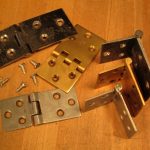We may receive a commission when you use our affiliate links. However, this does not impact our recommendations.
In our soon-to-be-mailed August issue, furniture maker Freddy Roman discusses the use of elliptical shapes. Freddy uses them frequently in the Federal-style furniture he makes. In the article, he shows three easy ways to generate the shapes using simple geometry. Not only do these techniques allow you draw the shapes, but they can be applied in the shop to actually cut the shapes. How? Once you know how to find the radius points, you can use a trammel beam with a cutter for handwork or swing a router attached to a circle cutting jig.
Describing the layout steps makes the process seem far more difficult than it actually is. In the video I lay out a false ellipse using the most complicated of the three methods (it’s also the most versatile) and describe how it’s done in about three minutes. Check it out.
If you liked this, you may also be interested in the “Drafting & Design for Woodworkers Collection,” which includes a hardcover book and two CDs.
Here are some supplies and tools we find essential in our everyday work around the shop. We may receive a commission from sales referred by our links; however, we have carefully selected these products for their usefulness and quality.










Steve,
It has been more years than I would like to admit that I have done the exersize you have shown (7th grade drafting class, I’m now 60). Just for my morbid sense of curiosity I duplicated your instructions using a CAD program. Then I used the Ellipse function to draw over the “false ellipse” in a different color. The difference is increadably minor.
If you draw a line from the center of your right or left arc at a 45 degree angle crossing the false ellipse and an actual ellipse you will see about 1/16″ departure at the 45 degree line.
Yes I know I am a geek.
Yes, technically not an ellipse (the set of all points the sum of whose distance from two points (the foci) is equal) [cf. circle, the set of all points whose distance from a single point (center) is equal (the radius)]
x^2/a + y^2/b = c (an ellipse)
x^2 + y^2 = r (a circle)
What Steve has constructed is often called a draftsman’s oval and is really close, but not exact, to an ellipse. A good article on this (see the diagrams) at http://en.wikipedia.org/wiki/Oval
But I really love compass and straightedge constructions. Many of which quit being used after my grandfather’s generation.
Are my two math degrees showing?
Steve, the geometric figure you were making is not an ellipse, but an oval. If you are not sure of the difference, please ask George Walker, who can describe, better than I, that an ellipse cannot be described at any of its points by circles. A true ellipse is a much finer and esthetically pleasing shape. There is an adjustable and quick device that you can make with a single stick, two nails and a pencil that will enable you to make ellipses.
Regards,
Gary Laroff
I appreciate the demonstration, but how about using two nails and a piece of string?